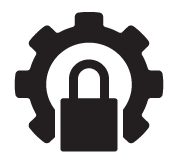Model:
Your Model No.:
Mfr. Model No.:

Expert lockout programs and compliance management to protect your employees.
Lockout is a safety procedure which is used in industry and research settings to ensure that dangerous machines are properly shut off and not able to be started up again prior to the completion of maintenance or servicing work. It requires that hazardous energy sources be "isolated and rendered inoperative" before work is started on the equipment in question.
Because it is the law! In 2005, CSA standardized the requirements for lockout across Canada instead of each individual province creating their own processes and procedures. Thus, the CSA Z460 standard for the “Control of Hazardous Energy – Lockout and Other Methods” was put into effect. This ensured that no matter which province an individual worked in, the need for isolating and locking out energy sources would always be a requirement.
Shop Safety Solutions Now!
All energy sources must be identified. This may involve reviewing equipment schematics, reading manufacturer instructions, physically tracking lines, etc. An ability to properly identify all energy sources affecting the safety of the work to be performed is the first critical step in achieving total Lockout.

Once the energy sources are identified, they must be neutralized. In most cases, this will involve shutting off the energy control device (i.e. valve, electrical disconnect switch or panel, etc.) and bleeding off or releasing residual energy.
In some cases where the energy cannot be released, any components that could cause injury must be blocked, braced, pinned or otherwise secured to ensure the work can be safely performed.
If the energy cannot be neutralized, the risk of injury must be neutralized by taking other adequate means to protect the worker(s). This may involve the use of personal protective equipment (PPE) when dealing with hot surfaces or chemical exposure, the use of barriers to shield against hazardous substances, etc.

Once all the sources of energy have been identified and isolated (bleed lines open, pressure released, etc), the energy control devices must be secured in position with a lock. As a general rule, each worker should be assigned their own lock(s). The lock(s) could be identifiable with an engraved name and / or clock number, although this is not considered mandatory.
Each worker involved in the project should apply his or her own lock; co-workers are not to rely on another person's lock for protection since they may leave and remove their lock prior to the completion of all portions of the work.
Locks should not be borrowed or loaned since this will dilute the identification part of the system. One example of an identification system is colour coding. The coding could relate to a department or specific type of trade. Generally, 1 lock and tag is required per worker per energy source.

The Lockout procedure must be verified with a test. In the case of an electrical lock out (after switching off and locking out the main disconnect panel), when clear, try the start button to see if the equipment will operate. Remember, after pressing the start button to also press the stop button, because when power is restored, the machine may cycle.
Testing is often considered to be the most important step in the Lockout process since it clearly verifies if full Lockout has been accomplished.
In many cases, testing is the last chance the affected personnel have to verify that the Lockout process is complete.
Max quantity is 999999999. Your cart item has been updated
Model:
Your Model No.:
Mfr. Model No.:
Qty.: